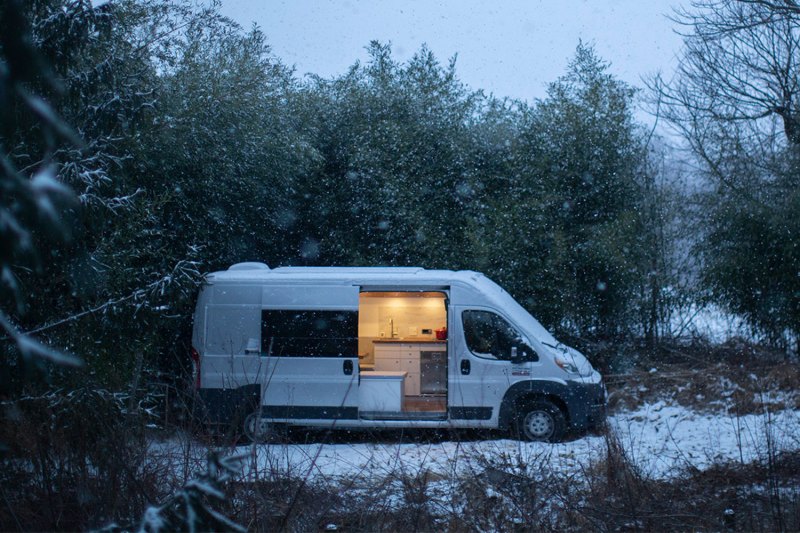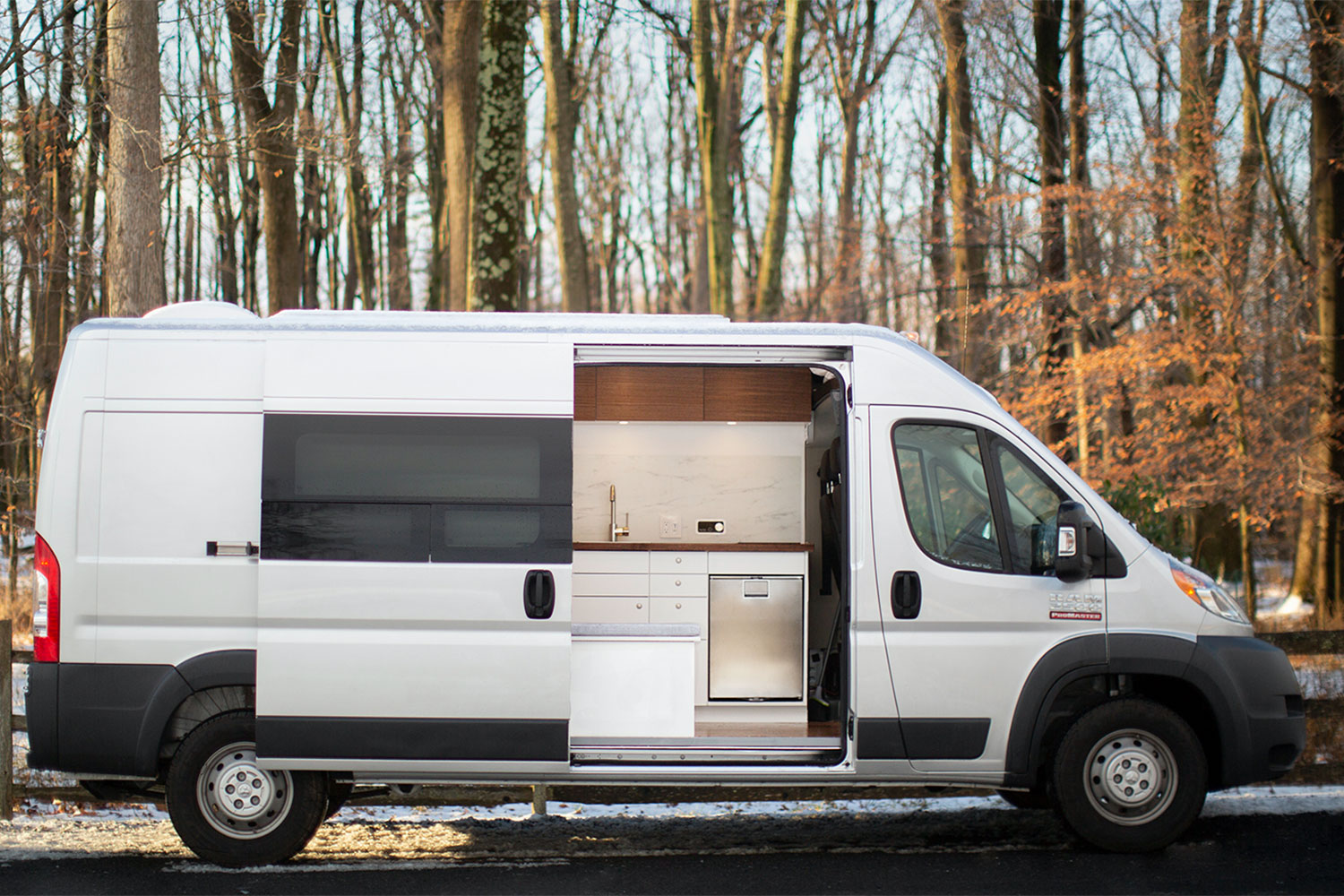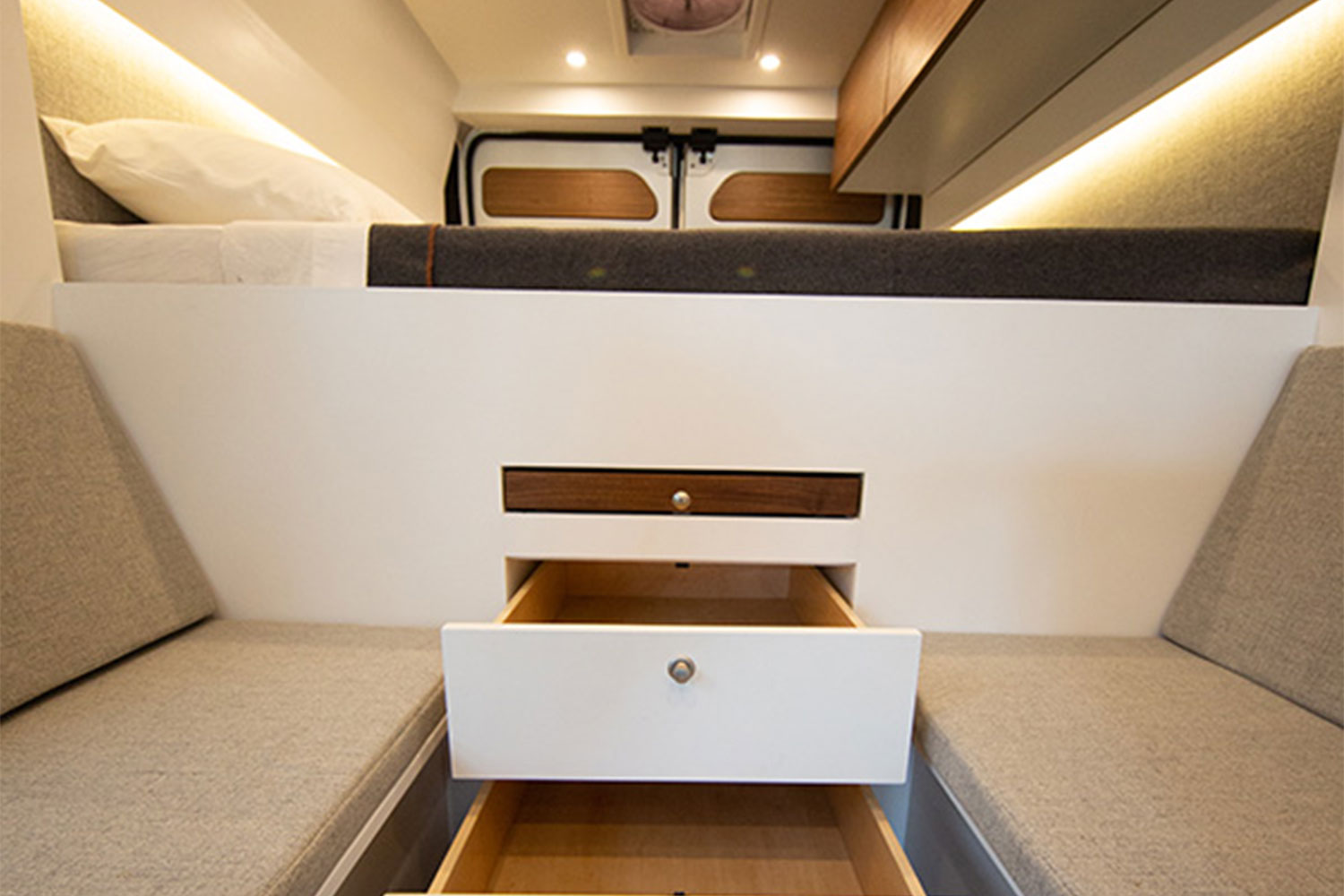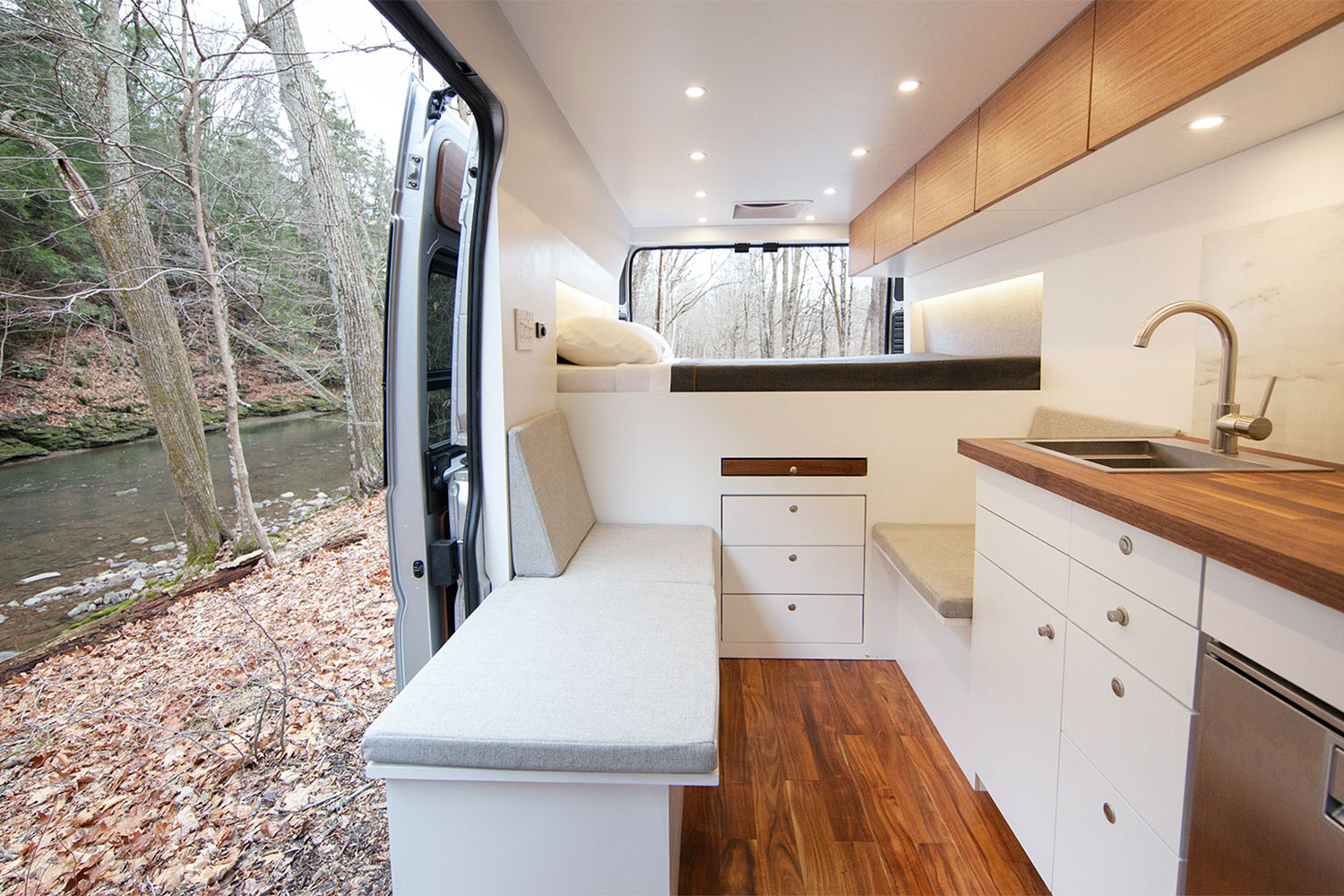
The movement to downsize is now firmly entrenched in our culture. It started with many (mostly young) Americans eschewing traditional 2,000-square-foot homes in favor of tiny houses. But, some want to go even smaller and more portable by taking their house on the road. If you’re considering the switch to vanlife, you could do worse than Ready Set Van’s lineup of high-tech, built-to-order campervans.
Ready Set Van’s off-grid adventure vans are designed to take their drivers just about anywhere. The company starts with the trusty Ram ProMaster platform — a pared-down “blank slate” that’s become a favorite among vanlifers. From the outside, most of its conversions look like ordinary delivery trucks. That’s part of the draw for many campers looking for a stealth ride that won’t draw unnecessary attention when camping in, say, a residential neighborhood or the city.
The interior, however, is another matter. Fit and finish rivals that of most upscale urban apartments. The stark white cabinets, raw wood countertops, stainless fixtures, and recessed lighting all make for a sleek, modern aesthetic. Each of the three pre-defined van models is outfitted with the comforts of home. At the rear are the sleeping quarters with a fixed, full-size bed. A “garage” below the bed provides ample storage space for two full-sized mountain bikes and plenty of other gear. Ahead of that is a combination lounge/dining area that blends seamlessly into the kitchen. The latter features an 80-liter refrigerator, a stainless steel sink, and an induction cooktop. Composting and portable toilets are even an option.
What truly sets Ready Set Van’s conversions apart, however, is its massive Tesla-powered battery modules. Most mainstream campervans offer a meager 100- or 200-amp-hour battery system. Ready Set Van seriously ups the ante with a standard 420-amp-hour system, and the option to upgrade to a beefier 840- or 1,260-amp-hour alternative. Any of the three options offer more than enough juice to power all of the van’s appliances, lighting, hot water system, and air conditioner. The flagship battery bank — aptly named “Maniac” — will run the van’s AC for up to 15 hours. It’s a nice option, especially for pet owners who might want to spend the day on the trail while ensuring their pet is safe and comfortable.
Ready Set Van’s conversion campervans are available now, starting at $35,750 for the entry-level Basecamper. The top-shelf The Wanderer is priced north of $45,000. The company also offers custom builds on the Mercedes-Benz Sprinter and Ford Transit van platforms. Because every van is built to order, the lead time can be a month or more. Based on the swanky interior and wealth of high-tech features, it seems worth the wait.
Still not sure whether the vanlife is for you? Honest Camper offers rentals, including retro VW Westfalia’s and Sprinter vans, in Vancouver so you can try before you commit.







